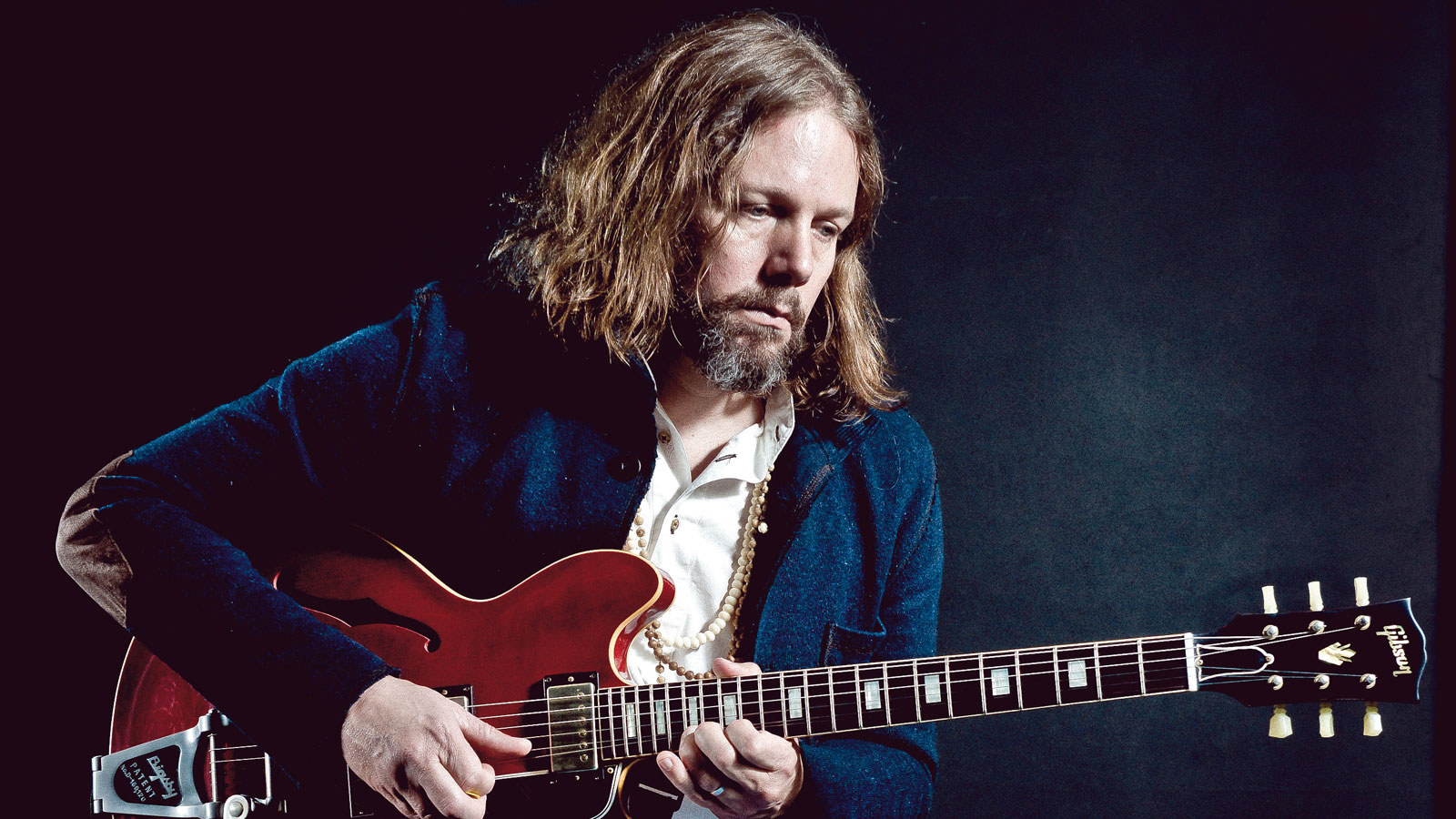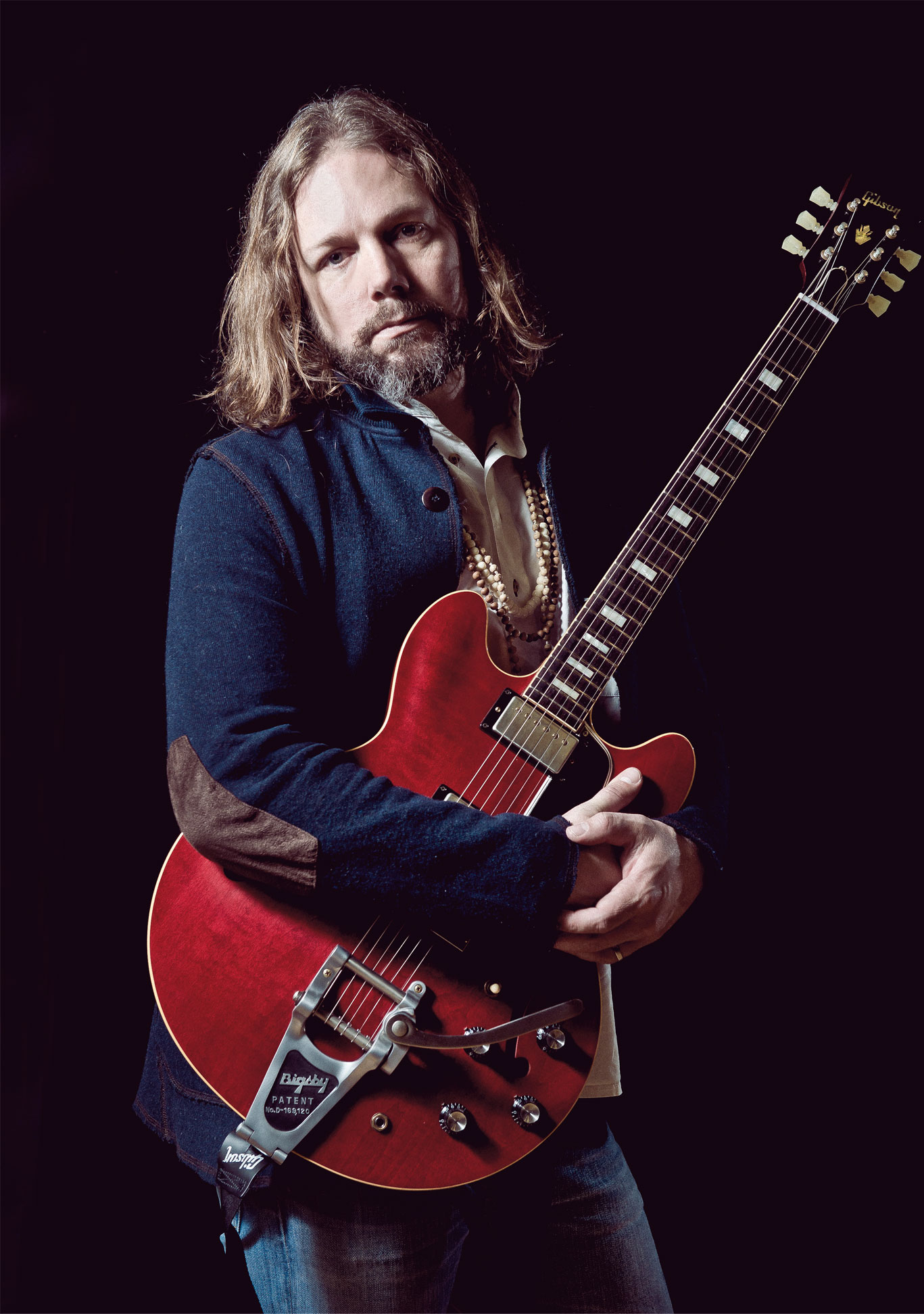Rich Robinson talks solo album, Sandy and restoring his ES-335
The Black Crowe on saving his storm-damaged Gibson

Losing 60 instruments and all of his amps to Hurricane Sandy made Rich Robinson take a stripped-back approach when recording his latest guitar-driven solo album. Here, he recalls the sessions in Upstate New York, which also saw the Black Crowes star take care of business on the bass...
As a Black Crowe, Rich Robinson's rootsy rock 'n' roll guitar playing and lucrative songwriting partnership with lead vocalist brother Chris helped the band sell more than 30 million albums.
While mainstream guitar music in the 1990s lurched from one trend to another, the Crowes' on- and offstage fireworks channelled the spirit and R&B boogie of the Mick Taylor-era Stones, with a sizeable helping of Southern-fried rock thrown in for good measure.
"It was after the flood, so I had five guitars and a couple of amps, but it was cool to have to work within those parameters"
Although the last decade has seen The Black Crowes' output stutter due to multiple hiatuses and line-up changes, Rich Robinson has continued to tour hard and make regular visits to the studio, and his third and finest solo long-player, The Ceaseless Sight, hit the streets earlier this year to much acclaim.
We catch up with the genial, if somewhat jetlagged, Robinson at Gibson Guitar's London HQ, from where he casts his mind back to the recording sessions for The Ceaseless Sight, which took place just a few months after Hurricane Sandy's trail of destruction had left The Black Crowes' storage warehouse inundated by the storm surge.
"I knew that the Crowes were going to tour all year last year, so I went in right before that," reveals Rich. "I had maybe 10 things, nothing was really finished. I had skeletons of songs. I decided to go in and just use the energy of the studio.

Rich, pictured with his signature Gibson ES-335 © Will Ireland/Future
Want all the hottest music and gear news, reviews, deals, features and more, direct to your inbox? Sign up here.
"I went up to Woodstock to this amazing studio that I worked in called Applehead Recording. I really feel comfortable there. I made my last record there and I've done a lot of stuff there. The guys were great and it was really cool.
"I went in in February of 2013 and just knocked it out. It took about a month. It was after the flood, so I had five guitars and a couple of amps, but it was cool to have to work within those parameters."
Although damage to a rock star's guitar collection obviously pales into insignificance next to the human cost of the largest Atlantic hurricane on record, it's impossible for a fellow guitar lover not to wince when contemplating the 60 or so instruments and numerous amplifiers that Robinson lost to flood water.
"A couple of guitars floated on top of wardrobe cases and stuff, so they were cool," says Rich of the instruments that made it through the storm and ended up featuring on the album's 12 wiry and toneful cuts. "I had this SG that the Gibson Custom Shop had given me, which was amazing. Then I had a couple of Trussarts.
"I had skeletons of the songs, I had a verse, or I had a chorus, and I just kind of went with it and winged it"
"There's this Dutch guy named Teye, he moved to Austin and he makes guitars [www.teye-guitars.com]. He was influenced by Zemaitis, loved Zemaitis like I did. He kind of took it to the next level, you know, as far as the way that he creates guitars. And they're just beautiful. I really connect with those guitars.
"So I had one of those... and then I bought some while I was in the studio, like a cool Tele and a Strat. And I had my dad's '53 Martin D28, and that was it. Normally, I'll go in there and I'll bring about 30 guitars and, you know, have 25 amps, and it just gets a little silly. And this time I was like, 'Well, this is what we're doing, this is all I have, and let's get it done.'"
When it came to getting it done, the musical relationship between Robinson and his drummer, Joe Magistro, was key:
"Like I said, I had skeletons of the songs, I had a verse, or I had a chorus, and I just kind of went with it and winged it. I like using that energy off of each other, and it was just me and my drummer, Joe. We basically made the whole record.
"And we had this keyboard player named Marco Benevento, this guy from New York, who's f**king unbelievable. He came in after the fact, and played on it, and it was like, that guy came in for three days and just played some of the coolest s**t.
"And Amy Helm, Levon's daughter, came and sang on a couple of songs. So it was really good. It was a great vibe, a great studio, really cool - I think the record turned out great."
Robinson also handled all bass duties on The Ceaseless Sight, an instrument to which he's no stranger: "The first time I played bass was on [1996 Black Crowes album] Three Snakes And One Charm, and I played on the whole record. And then I played on [2001 Crowes album] Lions. And I just always got into it. I loved the process, because it's something totally different.
"And so on my solo record, since I was producing, I just did it, you know, for fun. And it's always cool to be able to do it. So basically, Joe and I, we'll do the basic tracks, I'll overdub the bass, then I'll do other guitars. And then once that's all finished, you know, keyboards or whatever, then I write lyrics and sing on it, which is cool.
"I love bass. You know, I don't think there are a lot of great bass players. There's not a lot of great bass playing going on. What became common since the 90s was just to basically follow the kick drum, you know, stay out of the way. But the bass players I love were John Paul Jones or Andy Fraser. People who played these really cool, melodic bass parts, that carried a tone that wasn't guitar, wasn't keyboards.
"And the melody and the counter-melodies that these amazing bass players would bring in to play... Even when Keith would play, or Ronnie Wood playing on those Jeff Beck records - f**king amazing."
A Musical Companion
Not only has Robinson's '63 ES-335 been brought back to life, but it's been recreated as a Gibson Memphis signature model, too...
When Superstorm Sandy made landfall in New Jersey on 29 October 2012, among the damaged buildings was a storage facility belonging to The Black Crowes.
Rich Robinson's prized, all-original 1963 Gibson ES-335 was among many instruments that suffered severe water and mould damage, and only a remarkable year-long restoration project by Kentucky-based luthiers RS Guitarworks could save it.
"They had to put it in a dry room," explains Robinson, "get rid of all the mould, take everything apart and refinish - basically rebuild the guitar. It came back all original."
In the midst of the process, Gibson Memphis began work on a signature production version of that guitar, the result of which is the gorgeous Gibson Rich Robinson ES-335 - this example numbered 5/500 - that Rich is pictured with in this feature.
"It really turned out better than I had hoped," says Rich. "I'm really happy with it. The neck is a little bit thinner [than the original]. It's very cool, it plays well.
"I've always liked the way 335s feel and the sounds I can get out of them. The first record I used them on was The Southern Harmony And Musical Companion in '92. I used my '63 all over that and pretty much every record since. It's a guitar that's been with me forever. I mean, the more guitars I've collected over the years, I always still went to that one. That's where I am."
The Gibson Rich Robinson ES-335 is available now for £2,799.
Chris Vinnicombe worked with us here on the MusicRadar team from the site's initial launch way back in 2007, and also contributed to Guitarist magazine as Features Editor until 2014, as well as Total Guitar magazine, amongst others. These days he can be found at Gibson Guitars, where he is editor-in-chief.

